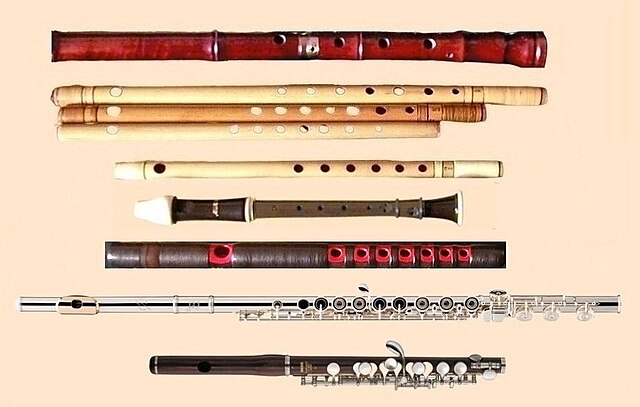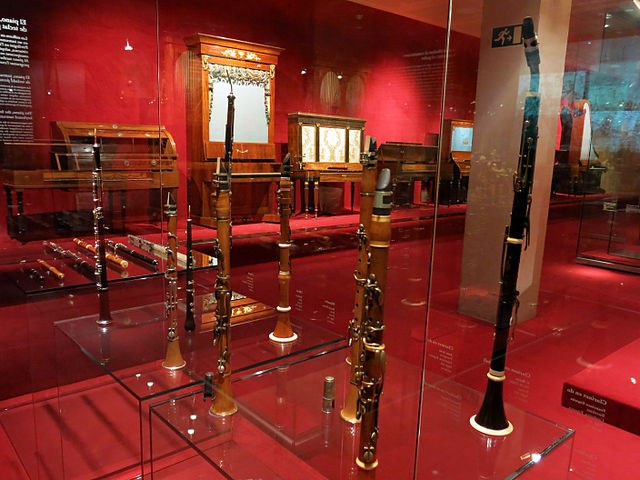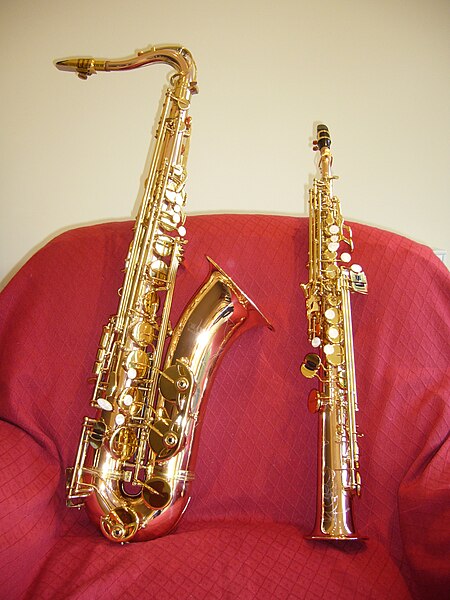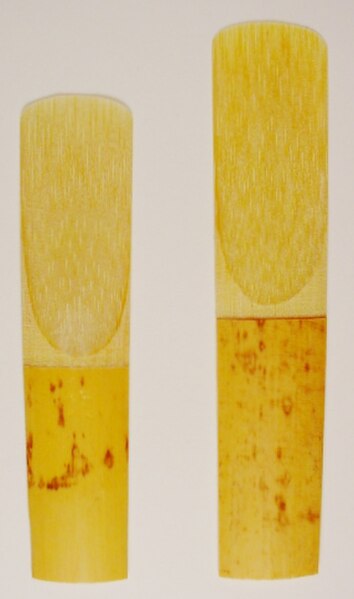The flute is a member of a family of musical instruments in the woodwind group. Like all woodwinds, flutes are aerophones, producing sound with a vibrating column of air. Unlike woodwind instruments with reeds, a flute produces sound when the player's air flows across an opening. In the Hornbostel–Sachs classification system, flutes are edge-blown aerophones. A musician who plays the flute is called a flautist or flutist.
Shinobue and other flutes
Statue of Krishna playing a flute
Chinese women playing flutes, from the 12th-century Song dynasty remake of the Night Revels of Han Xizai, originally by Gu Hongzhong (10th century)
Bone flute made of a goat's tibia, 11th–13th century AD.
Woodwind instruments are a family of musical instruments within the greater category of wind instruments. Common examples include flute, clarinet, oboe, bassoon, and saxophone. There are two main types of woodwind instruments: flutes and reed instruments. The main distinction between these instruments and other wind instruments is the way in which they produce sound. All woodwinds produce sound by splitting the air blown into them on a sharp edge, such as a reed or a fipple. Despite the name, a woodwind may be made of any material, not just wood. Common examples of other materials include brass, silver, cane, and other metals such as gold and platinum. The saxophone, for example, though made of brass, is considered a woodwind because it requires a reed to produce sound. Occasionally, woodwinds are made of earthen materials, especially ocarinas.
Woodwind instruments at the Museu de la Música de Barcelona.
Tenor and soprano saxophones
Alto and tenor saxophone reeds
A piper playing the bagpipes in Newport, Rhode Island








